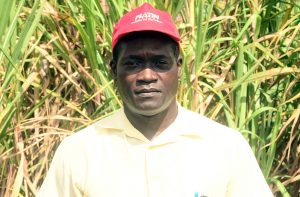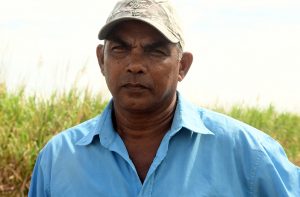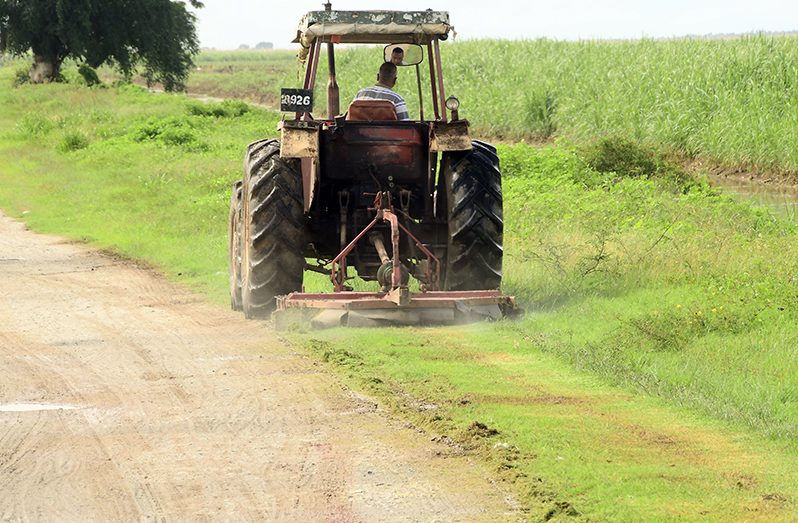— as private cane farmers start to regain confidence in sugar
— willing to return once industry promises better prices
INCREASED investments in the local sugar industry have served as an impetus for private cane farmers, who are assessing the situation with the hope of re-cultivating their lands on the West Coast and West Bank of Demerara, to satisfy the demand of the Uitvlugt Sugar Estate.
The story of private cane farmers often goes untold, as there is a general perception that the sugar industry is steered solely by employees of the Guyana Sugar Corporation (GuySuCo). But, the contribution of those stakeholders is considered crucial, especially at Uitvlugt, where profitability is said to be inevitable once the estate receives the support of private farmers.

“Private farmers play a great role in the development of Uitvlugt as a whole… of the 6,005 hectares of land belonging to the Uitvlugt Estate, 3,303 [hectares] were leased to the farmers. However, due to financial constraints, only 1,637 [hectares] of that land has been cultivated,” Agriculture Manager of the Uitvlugt Estate, Andrew McLeod, told the Guyana Chronicle following a tour of the cane fields along the West Coast of Demerara, on Wednesday.
The Uitvlugt estate is capable of producing 44,000 tonnes of sugar, but this can only be achieved once private farmers utilise the lands which are leased to them.
“Should all lands leased to farmers be cultivated, this target [44,000] tonnes would be achieved and the estate would reach a profitable stage,” McLeod said.

Uitvlugt Estate, one of the three operational estates managed by GuySuCo, concluded its production for the second crop of 2020 with a total of 18,599.4 metric tonnes.
Over the past few years, this estate has been producing on average just over 30,000 metric tonnes of sugar annually, mainly because the contribution of private farmers has declined significantly. The number of private cane farmers is said to have moved from just over 160 to around 20 within the past four years.

Although this is the case, McLeod said private farmers still produce 34 per cent of the Tonnes Cane to Tonnes Sugar (TCTS).
SIGNIFICANT
This contribution, though minimal in comparison to the expected output of private farmers, has been significant to the Uitvlugt estate, McLeod said.
“We need to engage our farmers and to have a private/public partnership in order for our three-year business plan to be achieved. My task is to appeal to the farmers to come on board so we could make this estate successful,” the agriculture manager said.
The government recently sought and received a supplementary allocation of $4 billion for GuySuCo.
In presenting a disaggregation of the supplementary allocation ($4 billion), the Minister of Agriculture, Zulfikar Mustapha, said $2.1 billion will go towards Albion Estate; $518 million to the Blairmont Estate; $60 million to Uitvlugt Estate; $10 million to Skeldon Estate; $746 million to Rose Hall Estate; $533 million to Enmore Estate and $60 million for the head office.
“With the government intervention, I feel the farmers will come on board because some of the benefits the farmers would have received was lost and now it is reintroduced… now I see the farmers being on the forefront of the estate, especially when they see sugar recovery improves, timely marketing of the canes and less waiting hours, we will see results,” McLeod reasoned.
OPTIMISTIC
Cane Farming Manager at the Uitvlugt Estate, Mahendra Sukhu, was also optimistic that investments in the factory would stimulate the farmers’ interest.
“With the investment towards the factory, improvement of the boilers and so forth, we hope it will encourage them to come back on stream,” Sukhu said in an invited comment following the tour. Through those investments, there will not only be improvements to the factory, but also an increase in support meted out to private farmers.
“For two years we tried to do planting and tillage for them to get them started, but we stopped it. If it comes back on stream it will assist them to get back in the field,” Sukhu said.
Already, the estate has started to supply chemical and fertilisers to farmers based on the hectares they cultivate. While those items are not free, farmers are given a year to make payments.
The estate has also been advising farmers on technical matters related to cane growth, and the application of fertilisers and chemicals to care for crops.
Although those services are available, Sukhu said there are two major deterring factors for private farmers and those are the price for sugar and the TCTS. Those have been the main concerns for the past three years, he said. A private cane farmer, Premraj Ramraj, concurred that prices for sugar have been discouraging over the years, but he was optimistic that the recent investments will effect an improvement in this area.
Ramraj, who returned to Guyana from Canada in 2001 to take up cane farming, said: “For the past couple of years we were incurring losses, but because we have all the machinery we could not let it down. Remember as cane farmers we have excavators, tractors, trailers, so there is nothing you can do with the machine and we were getting a loss or breaking-even… we hope it will turn around with the funds they are getting. It is positive, but I hope there are better prices.”
The private cane farmer cultivates over 600 hectares of land and produces over 2,000 tonnes of sugar annually.
He sees the investments in sugar as an encouragement for farmers who had lost confidence in the industry.
Going forward, Ramraj is hoping to see improvements in the TCTS, better access dams and a reduction in the high cost of leasing lands.
In 2017, the former A Partnership for National Unity + Alliance For Change (APNU+AFC) Coalition Government had announced the closure of several sugar estates across the country. The move saw four sugar estates being closed, and 7,000 sugar workers losing their jobs.
Plans are afoot to not just rehire persons, but to return this industry to viability through coordinated and prudent management, which is expected to come from both private and public stakeholders




.png)









